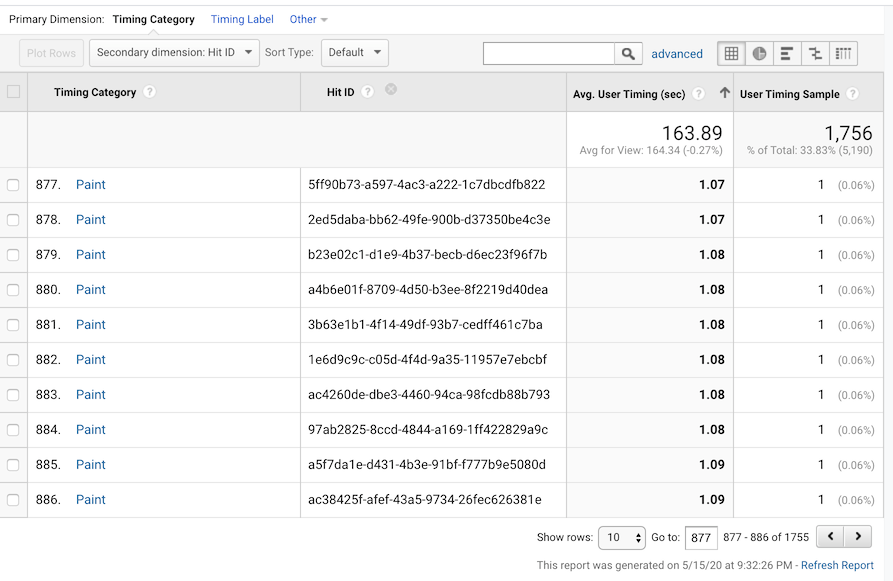Unlock Deeper Insights With Additional Dimension in Google Analytics
With the substantial stretch of information readily available in Google Analytics, the application of additional dimensions can substantially improve your logical capacities. By strategically incorporating secondary measurements right into your analysis, you can discover important insights that might or else stay obscure - Secondary Dimension in Google Analytics.
Understanding Main Vs. Additional Measurements
When evaluating data in Google Analytics, it is necessary to compare key and additional measurements to obtain deeper insights into user behavior. Key dimensions are the primary classifications by which you can watch your data, such as source/medium, tool, or landing page. These measurements offer the essential framework for arranging and comprehending your information. On the other hand, secondary measurements enable you to further dissect your key measurement data. By adding a secondary measurement, you can layer on extra details to your main measurement, allowing a much more granular evaluation. For instance, if your primary measurement is the source/medium where users got here on your site, adding a secondary measurement like geographic location can disclose where those individuals are situated geographically. When looking at the main measurement alone, this added layer of details can help you determine patterns, patterns, or anomalies that might not have actually been noticeable. Leveraging both second and primary measurements in Google Analytics is vital for extensive information analysis and notified decision-making.
Making Use Of Secondary Dimensions Successfully
Successfully making use of second measurements in Google Analytics improves the deepness and granularity of data analysis, supplying beneficial insights right into customer actions and trends. By integrating second dimensions alongside primary dimensions, marketing professionals and experts can dive deeper into the specifics of user interactions on their web sites. Additional measurements enable users to section and filter primary dimension data additionally, offering an extra thorough sight of individual demographics, actions, and interactions. This can be particularly valuable when attempting to recognize the influence of certain variables on individual interaction, such as the gadgets or internet browsers they are utilizing, the sources of their traffic, or their geographical places.
Additionally, secondary dimensions allow users to compare and contrast various data points within a solitary record, assisting in an extra detailed evaluation of user behavior patterns. By leveraging additional measurements properly, companies can reveal covert understandings, optimize their marketing approaches, and boost the overall individual experience on their internet sites.
Exploring Typical Second Dimension Combinations
To even more examine customer actions and patterns in Google Analytics, it is important to explore common combinations of secondary dimensions. Some usual secondary measurement mixes that offer beneficial understandings include evaluating website traffic sources with user places to recognize where web site site visitors are coming from geographically and just how they discovered the website. Checking out user behavior metrics with additional measurements such as demographics or rate of interests can assist in targeting certain audience sections extra successfully.
Applying Second Dimension in Customized Information
Making use of second measurements in personalized records permits a more comprehensive analysis of data in Google Analytics, enhancing the depth of insights obtained. When redirected here creating custom-made records in Google Analytics, including second measurements can give an extra thorough view of exactly how various measurements connect with each various other. This function allows individuals to dig deeper into their data and uncover useful correlations that might not be instantly noticeable.
By using second dimensions in personalized reports, users can obtain a far better understanding of their website or app website traffic. Integrating the primary measurement of "source/medium" with the secondary measurement of "landing page" can expose which landing web pages are executing finest for traffic coming from details sources. This insight can aid marketers maximize their projects and enhance total conversion rates.

Enhancing Information Visualization With Secondary Dimension
When exploring information in Google Analytics custom-made reports, incorporating second dimensions not only supplies an extra detailed evaluation but also improves the graph of insights with information visualization. By adding an additional measurement to your reports, you can enhance the method information image source is presented, making it simpler to recognize patterns, fads, and correlations within your web site's performance metrics.
Secondary dimensions can aid you segment your data even more, allowing for a much deeper understanding of customer habits and communications on your website. This boosted degree of granularity can be particularly valuable when trying to separate details variables that may affect your website's performance - Secondary Dimension in Google Analytics.

Conclusion
Finally, leveraging additional dimensions in Google Analytics enables a more comprehensive evaluation of data, causing deeper understandings and more educated decision-making. Secondary Dimension in Google Analytics. By including additional layers of details to primary data collections, analysts and marketing experts can discover surprise trends, patterns, and correlations that give a granular view of individual actions and communications. This improved degree of understanding enables optimization of campaigns and tailored approaches for details target market sectors, inevitably enhancing efficiency and conversion rates
On the other hand, additional dimensions permit you to more dissect your key dimension data. By adding a second dimension, you can layer on extra details to your main measurement, allowing a much more granular evaluation. If your main measurement is the source/medium via which customers showed up on your site, adding an additional measurement like geographic area can reveal where those individuals are situated geographically. By incorporating additional dimensions along with primary dimensions, marketing experts and experts can delve deeper right into the specifics of user interactions on their sites. Second dimensions allow users to section and filter key measurement information additionally, providing an extra detailed view of individual behaviors, interactions, and demographics.